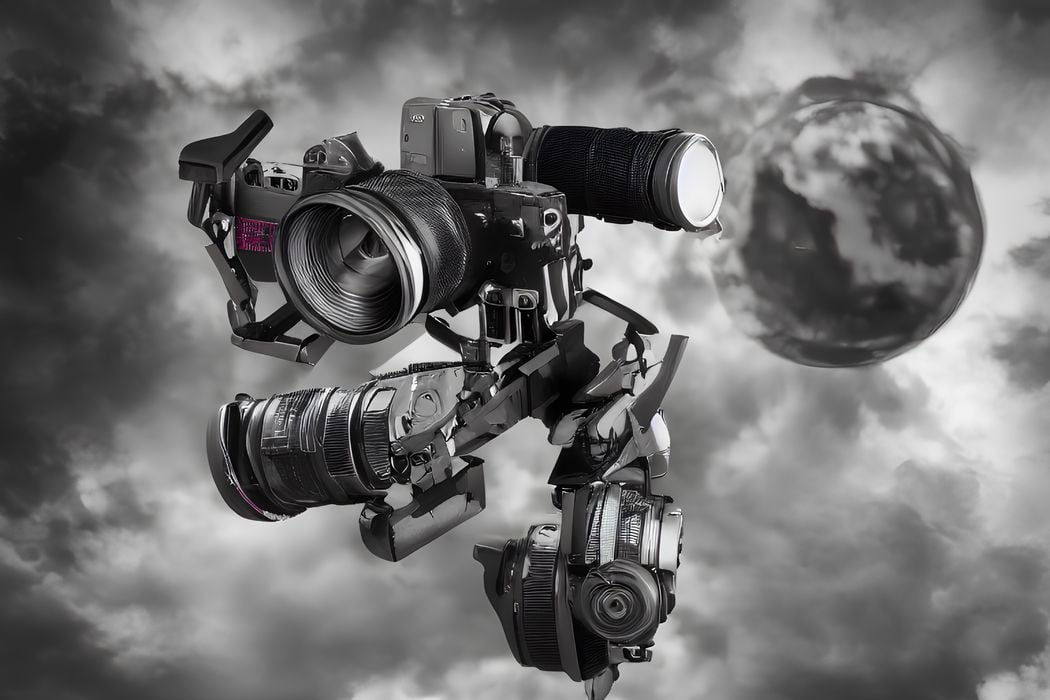
Sketchfab has issued a rather interesting and futuristic update to their Terms of Use.
Sketchfab is one of the larger sites providing online sharing of 3D models. While most of the site’s content is intended for visual use, there are plenty of printable 3D models presented as well. It’s also possible to embed a 3D viewer of models on websites using their service.
The change in Sketchfab’s terms of use are directly related to recent developments in AI tools.
We’ve written extensively on these developments, but in a nutshell these highly complex tools are able to absorb massive quantities of information from online sources, such as web pages, images, etc. Their AI training on these materials allow new content to be generated from a text prompt.
A good way to think about “text to image” capability is to “write a caption” and the system will generate the corresponding image. It’s much like the typing look-ahead you see on a search box, except far more capable.
There are multiple projects now developing both text and image generating AI systems, and I’ve used them myself. They are incredibly powerful and very useful if applied correctly.
Back to Sketchfab.
Their new terms say this:
“If you wish to protect your uploads from usage by generative AI programs, you may tag your models “NoAI”.
You (and other users) agree not to use uploads marked as “NoAI” in datasets for, in the development of, or as inputs to generative AI programs.
If you make your work available under a license that permits redistribution (including as part of a larger work), for example one of the Creative Commons licenses or the standard Sketchfab License Agreement, you agree to tag any of your models that have been made with the use of generative AI programs as “CreatedWithAI”.
Sketchfab agrees not to use any of your uploads in datasets for, in the development of, or as inputs to generative AI programs.
Sketchfab agrees not to license any of your uploads to third parties for use in datasets for, in the development of, or as inputs to generative AI programs.”
Hold on, why would Sketchfab want to do this? They don’t provide images or text, they provide 3D content.
The answer is that there are several parties developing “text to 3D” systems, including OpenAI (makers of ChatGPT), NVIDIA and Luma AI.
While those systems are just barely emerging from concept level, they will require material for training, just as ChatGPT used the text on billions of webpages and DALL-E used the images and captions on billions of webpages.
Some artists are upset that their work was somehow used in small ways to help create these AI systems without their consent.
It seems that Sketchfab is quite forward-looking here. They must anticipate that some parties will be developing a text to 3D system and require online data for training. They intend on offering their users a way to block this training if desired.
Sketchfab is also creating a way to designate that a 3D model was indeed created by an AI, using their “CreatedWithAI” tag. From this we can assume Sketchfab leaders assume that AI-created 3D models are almost certainly coming.

It’s not clear how they will technically implement the “NoAI” approach beyond mere tagging, and that’s a problem that image artists and text writers also have: if you want people to see your works, then AIs can also see your works. There’s no way getting around it.
I suspect their approach is more legal than technical. For example, should a new AI project pop up and declare they (or be discovered to) have used a particular site’s 3D content, then some users of that site may be unhappy. Sketchfab is getting ahead of that game by instituting this new policy and ”NoAI” tags.
I suspect this practice may become standardized, where sites have a specific way to indicate content should not be analyzed. However, it’s all going to be on the “honor system” for the reasons above.
Text to 3D will take longer to achieve, however, because the amount of data to be processed is vastly larger than text samples, and even larger than images. We may require notably powerful processors to perform useful text to 3D when it arrives.
But when it does, you can be assured that some 3D models in Sketchfab were not used for that training.
Via Sketchfab
